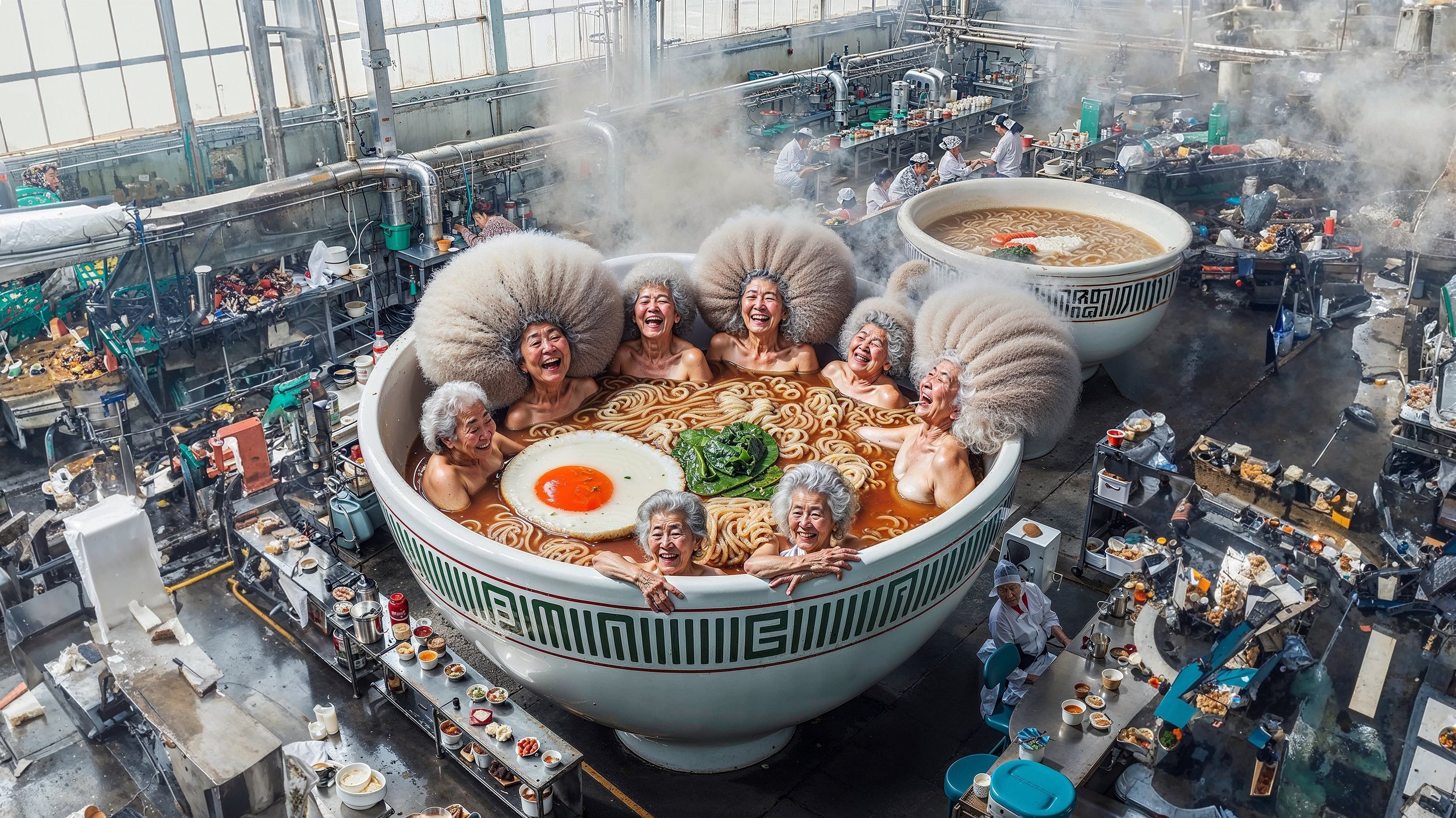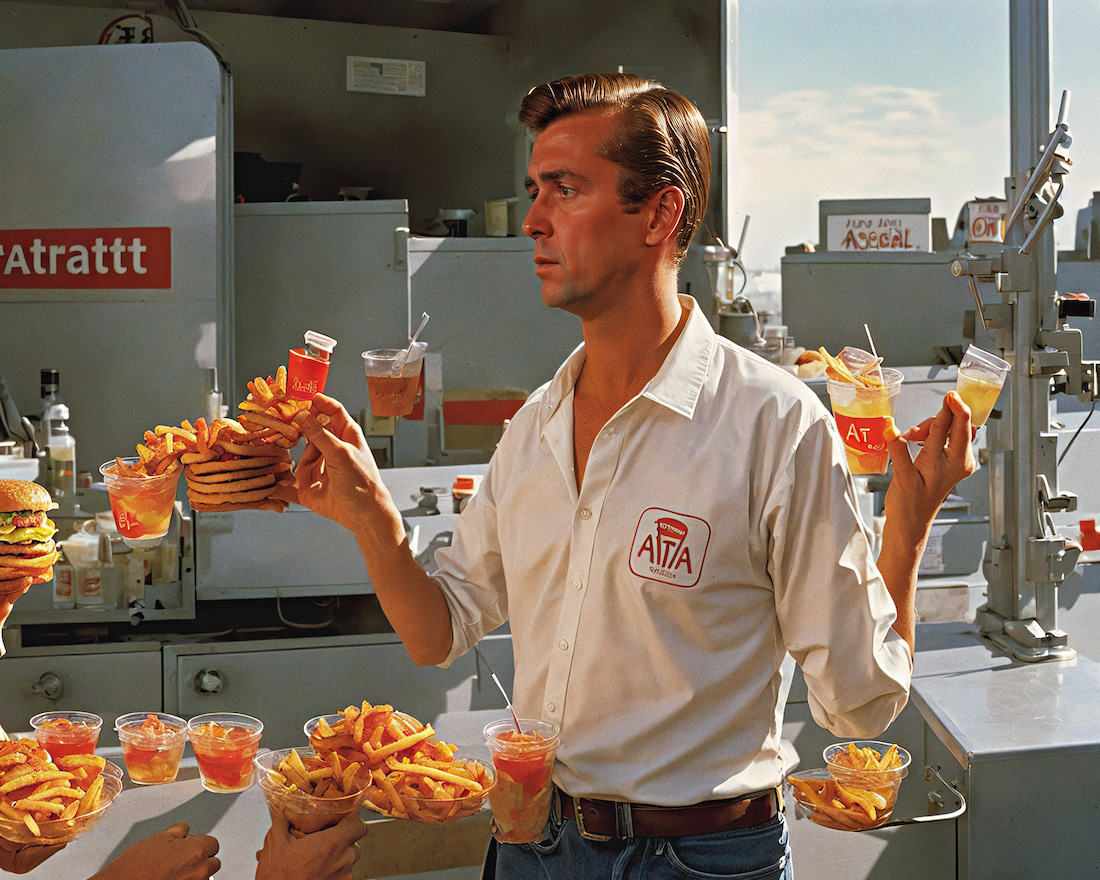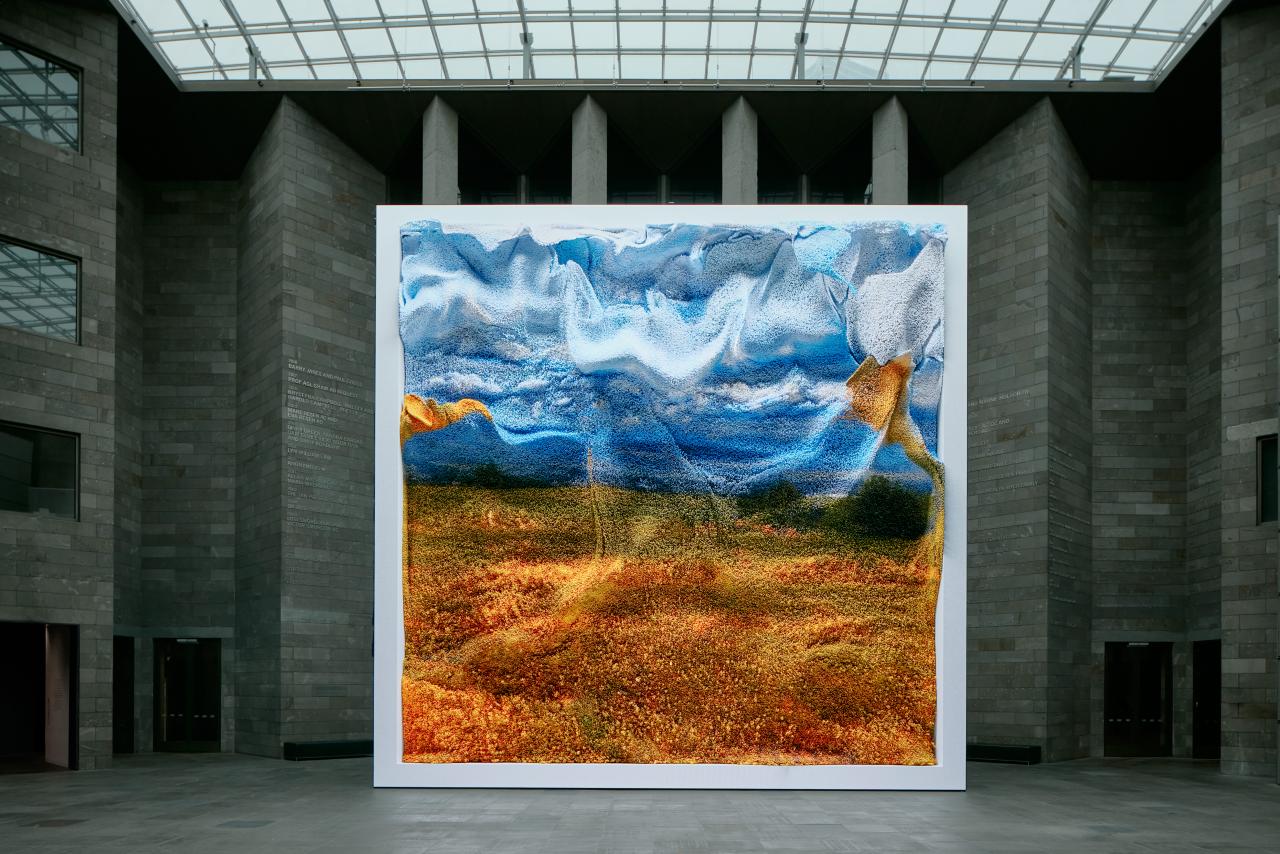
Everyone is taking photographs, but who is looking at them, or can hope to see more than a tiny fraction of the total output? Is the vast bulk of photographic production doomed to remain unseen, beyond a casual glance? What are all those photographs for?
Artificial intelligence provides a kind of answer. The new photography — variously described as post-photography, or synthography, or promptography, or simply as art, or what the prominent AI photographer Roope Rainisto refers to as art in “the photographic style” — finds a use for the much-remarked abundance of photographic images. It uses them to make more images.
While we are puzzling over what to do with all the images we already have, AI, with magnificent irony, is deploying the massive archive of photographs and visual documents to ramp up production to ever-greater heights, giving rise to yet more floods of images — images that may not quite be definable as photographs but can and often do look unsettlingly like them.
As more and more people adopt the new and ever-developing AI tools, increasing numbers of these new kinds of images will be incorporated into the data bank. The old kind, the ones made with a camera, will mix democratically with the new, all of them fodder for the next iteration of images, and the one after that.
The debates and outcries of a year or two ago, when several AI photographs were smuggled into photography competitions and subsequently unmasked, already seem quaint. AI photography is now centre stage, no longer smuggled in, no longer pretending to be something it is not, but prominently displayed as such in photo fairs and galleries and in dedicated exhibitions.
The question of whether these photographs are frauds now seems to be a huge over-simplification of the issues raised by the rise of AI image-making. Even the most diehard of dark-roomed traditionalists must now acknowledge that the flow of AI images is unstoppable and the barrier between camera-based photography and images made by using the tools of AI is permanently permeable.

“The photographic style”: Sunday Service, from Roope Rainisto’s Life In West America.
The AI-ness of the image signals a new kind of creative partnership between science and art, without it being entirely clear which of these two partners is in charge. The sheer, almost magical powers and potentialities of AI threaten to minimise and even eliminate the human element when it comes to creating images. It becomes all too easy to assume that the machine does it all, just as many people once assumed that the arrival of the camera would render the role of the artist, the maker, redundant.
Some will argue, convincingly, that AI’s use in photography is not nearly as new or groundbreaking as it seems. In art historical terms, it has a pedigree that stretches back at least to the 1950s and the first forays into cybernetics and “computer art.” More than that, it can be seen as merely the latest step in the long history of artistic manipulation, by which photographers, and indeed artists generally, have always used changing iterations of technology and other innovations and inventions to aid in the process of creation.
Yet what might be called the continuity argument falls short of being an entirely adequate explanation for where we are now. Something else has changed, something that has been highlighted and reinforced by the explosion in AI. We look at photographs differently now.
We no longer stop to look — we look without stopping. Joan Fontcuberta, photographer and prescient commentator on the phenomenon of post-photography, pointed a decade ago to how our “unprecedented glut of images” alters how we view the individual image.
It is now much more difficult for an image to stand out, to achieve the kind of aesthetic consensus that cements its iconic status. Instead, images blend into one another. “Extraordinary experiences (decisive moments),” says Fontcuberta, “are overwhelmed by banal experiences (indecisive moments).”
AI exposes the con in icon. It questions the validity of the single outstanding image, the one that surpasses all the others in aesthetic quality, that repays repeated viewings. Instead of pausing to reflect, we look, we share, we move on to the next image. AI photography responds in kind, providing us with yet more to look at. Our short attention span encourages more production, which in turn means more images. It is hard to imagine what, if anything, might slow this process down.
Cuteness and quirkiness, much remarked on as characteristic of AI art and post-photography, further limit our attention. We smile, or perhaps — if the cuteness is also a bit creepy — shudder briefly, and bid farewell. An image by Cartier-Bresson or August Sander encourages and indeed requires contemplation, but we do not have time for that.
The still image has to work hard to hold our attention, which explains why so many AI-assisted images are overly busy, crammed with content, in the hope that some detail in the frame will hold us for a bit longer. (“What I like about complexity in images is that it forces you to spend time on them,” says the Italian post-photographer, Andrea Ciuli.)
The Singaporean artist Niceaunties, in her project of the same name, has achieved remarkable success in a short space of time with her AI-mediated images of elderly women enjoying themselves in a dense and surrealistically collaborative world of cooking and games and similarly shared activities. The self-referential world she has created, the “auntieverse,” brilliantly embodies the twin qualities of creepiness and cuteness that seem so much a characteristic of AI visual output generally, at least for now.
These images are complex, almost architecturally constructed (niceaunties trained as an architect), advertising their artificiality while being also unnervingly real. They are unsettling, provocative, saccharin, edgy, charming and, after a while, tiring.
We, the viewers, impressed and amused but a bit auntied-out, can choose to leave the auntieverse after a bout of scrolling and move on, to look at another set of images by another artist. But we don’t have to leave the auntieverse behind entirely.
Before we go, we can pick one auntie image for ourselves and make it part of our personal collection. We can own it, by purchasing it as an NFT or as a print to hang on a wall or, in a low-end form of collecting, we can simply designate a preferred image as a favourite. We can build our own collection.
The decisive moment, once the province of the photographer, has thus migrated to the collector. To collect is to participate in the creative process, to become part of the AI journey while at the same time imposing some kind of personal order and stillness on the unstoppable flow of images. “Nothing is new about creating generative art,” says the influential collector Adam Lindemann, “but what is amazing is that finally there is an audience — collectors.”
Social media is accordingly awash with exhortations to collect. In Alex Estorick’s edited volume Right Click Save: The New Digital Art Community (2023), the critic and gallerist Isabella Wilkinson identifies “a new culture of co-creation” made up of artists and collectors. Collectors, she suggests, are as vital to the ecosystem as creators.
The collector holds the key to artistic reputation, while the activity of collecting is presented as a kind of art-making in itself. Do you want to be part of this image-based world, asks the Nigerian crypto artist Osinach. Then why not “enter the space as a collector?”
This last comment could easily be read as patronising — implicitly saying something along the lines of “those who can, make, those who can’t, collect.” But that reading does not take account of the extraordinary influence certain collectors and tastemakers have assumed in the world of AI photography and generative art and the immense power that they can wield.
Artists have always appreciated the importance of patrons, and in many cases erred on the side of deference in expressing that appreciation, but expressions of extravagant gratitude from AI artists and post-photographers are now the norm. It is after all no trivial matter to be noticed amid the never-ending avalanche of images.
Organisational collectors and cheer leaders for generative art such as Fellowship (“championing historical and contemporary artists at the cutting edge of photography, generative art, AI, and video”) and Le Random (“aims to demonstrate how computers can enhance human creativity, making our lives more interesting and beautiful”), together with a number of highly active individual collectors, are engaged in a process of validation, dubbing this or that image or artist worthy of being singled out and, yes, collected.
Reasons for choosing one image over another are harder to pin down. “There is an elusive magic,” said Fellowship recently in praise of one artist’s work, “that we can’t quite define.” The sales director at Fountain (“a white glove service for the digital art market”), sums things up in a pinned tweet: “most AI art sucks,” but “some AI art rocks.” It is one of the many paradoxes surrounding the new generative art that it has revived old-fashioned forms of connoisseurship, whereby individual taste and instinct — choose what you love — trump aesthetic justification.
Amid this accelerated process of repetition and renewal the technology is in some senses running ahead. The almost daily announcement of new tools, or of refinements or improvements to existing ones, leaves image-makers scrambling to exploit the potential of the latest iteration of technical capacity. At the same time the artist, the photographer, is at pains to emphasise the element of human control. Don’t panic, we are told, the machines are not really in charge.
In an illuminating interview in Right, Click, Save, the Hungarian artist Vera Molnar, who died in 2023 at the age of ninety-nine having begun working with computers and code in the 1960s, addresses the nature of the relationship between the artist and technology. “That is what is paradoxical about the computer,” she says. “It actually helps you to bring into the world what you had only imagined.” The computer “humanises your production,” she continues with emphasis — “not dehumanises, but humanises.”
In his Surfing Human Creativity with AI (2021), the Japanese artist and AI researcher Nao Tokui makes a similar point about the way in which AI expands our understanding of our own creativity, rather than merely replacing it. “AI is… neither imitation nor mimicry, but rather a mirror which reflects human actions by copying and externalising them, so that we may better understand them.”
The notion that the computer, or AI, highlights and enhances our humanity permeates the world of AI art and post-photography. It’s implicitly there in that mission statement of Le Random (“making our lives more interesting and beautiful”) and in many a generative artist and post-photographer’s characterisation of their own practice. “The relationship between the natural world and the digital world has been a core focus of my work,” says the highly visible generative artist and theoretician, Tyler Hobbs. “I want to find new ways to deeply merge the hand with the algorithm.”
This motivating idea, that computing and AI, rather than alienating us from reality, help to reconnect us with nature, with humanity and with history, is flamboyantly expressed in the work of the highly successful “new media artist” Refik Anadol, who aims for scale. His Quantum Memories, shown on a giant screen at the NGV in 2020, used 200 million photos of Earth “to visualise an alternate reality of nature.”

Refik Anadol’s Quantum Memories, commissioned by the National Gallery of Victoria, on show in 2020. Tom Ro/NGV
Since then, Anadol has deployed his “Large Nature Model” to display vast and ambitious works that both represent and remake nature. Images constantly morph and swirl on huge screens, conveying in their endless and unpredictable movement a dream like quality that encourages the viewer to step inside — in some cases literally so, when the swirling sets of colours and shapes are projected onto gallery ceiling and walls and floor.
Publicity shots of these displays will typically show a very small figure gazing up at a very large screen. The implication is that the viewer is simultaneously being dwarfed by and drawn into a world of technology and nature combined. Yet the texts that accompany these displays can often be a disconcerting mixture of technical detail and quasi-mysticism — “I wanted to visualise how a machine could hallucinate and a machine could dream” — two quite different registers that never quite mesh.
Anadol’s installations draw on a range of visual (and sound) material other than the photographic, but the bedrock of his ongoing project remains photography — those “220 million photos” that lie behind “Quantum Memories,” for instance. In contrast to the characteristic stillness of this raw material, the relentless movement of Anadol’s creations seems to suggest a cultural loss of faith in the power of the still image to connect to the natural world, a connection that, we are assured, will be re-established with the transformative assistance of AI.
Meanwhile, the still images and the video clips keep on coming, destined to be the raw material for the creation of yet more images and perhaps, should we pick one or two out from the crowd, to find a place in our own personal collections. We might collect for investment purposes, betting on the future status of the image as collectible. We might perhaps collect for the sense of ownership or control, or simply because we like what we see.
But will we look at our collection, or will we be too busy keeping up with the next iteration of images? It’s a very contemporary question, but it does have a kind of provenance. Vera Molnar, currently the subject of a retrospective at the Pompidou Centre, tells the story of a wealthy couple she knew who owned a painting by Luis Cranach. As a condition of the insurance, the Cranach was kept in a safe. No one ever saw it, she says. “I never saw it, either.” •
The post Indecisive moments appeared first on Inside Story.







